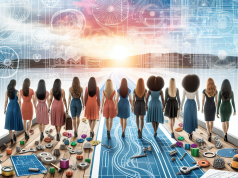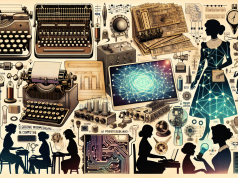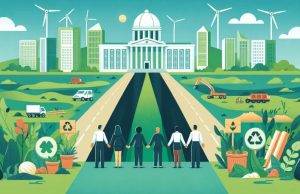In the bustling ecosystem of today’s corporate landscape, a unique convergence of generations is taking place. Baby Boomers, Gen Xers, Millennials, and Gen Z employees are bringing an unprecedented mix of experiences and viewpoints to the workplace. The challenge for businesses is clear: how can they foster a growth mindset that not only embraces this diversity but also drives innovation, productivity, and employee satisfaction? The answer lies in the cultivation of an inclusive culture, strategic professional development, and the savvy use of technology and mentorship.
Let’s explore how workplace leaders can build this culture.
### Creating an Inclusive Culture for Continuous Learning
An inclusive culture is the bedrock of a growth mindset. It is about creating an environment where differences are not just tolerated but celebrated. Leaders must be proactive in facilitating open communication and collaboration among different generations. Regular team-building activities and transparent dialogue can help bridge gaps in experience and perspective. This approach not only leverages the unique strengths of each generation but also fosters mutual respect and understanding.
### Personalized Professional Development
Professional development can no longer be one-size-fits-all. With multiple generations in the workplace, a varied approach is key. Younger employees may want more technology-driven, self-paced learning opportunities, while older employees may prefer more traditional, instructor-led sessions. By providing a range of options, companies can ensure that all employees have access to the learning they need to grow and stay engaged with the company’s mission.
Workplace leaders should work closely with HR to craft individualized career paths that consider the goals and skills of each employee. This could include cross-generational mentoring programs, which not only facilitate knowledge transfer but also help to build strong intergenerational relationships within the company.
### Harnessing Technology and Mentorship
Today’s technological landscape offers a plethora of tools for communication, collaboration, and learning that can be tailored to different learning styles and preferences. From online learning platforms to virtual reality simulations for training, technology can cater to the needs of a diverse workforce. Furthermore, it can serve as a common ground where different generations can learn from each other.
Mentorship programs are especially effective in bridging generational divides. Pairing a seasoned industry veteran with a younger employee can facilitate a mutual exchange of wisdom and fresh ideas. This symbiotic relationship can help older employees stay up-to-date with emerging technologies and trends, while younger employees can gain valuable insights from the extensive experience of their mentors.
### The Impact
Employers that successfully implement these strategies can expect to see a range of positive outcomes. A growth mindset leads to a more engaged workforce. When employees feel that their personal development is valued, they are more likely to be satisfied with their job and stay with the company longer. Furthermore, an inclusive, learning-oriented culture can lead to more innovative ideas as employees feel safe and encouraged to share their thoughts and suggestions.
Leading companies in various industries have already begun to see the benefits of fostering a growth mindset in a multigenerational workplace. These organizations report higher levels of innovation, a stronger sense of employee loyalty, and improved overall performance.
In conclusion, the successful integration of a growth mindset in a multigenerational setting hinges on a culture that values inclusivity, personalized professional development, the strategic use of technology, and the power of mentorship. By implementing these pillars, companies can not only enhance the working experience for their employees across all ages but also ensure their competitiveness in a rapidly evolving business environment.
















![From TAOLabs: A New, Simplified Way to Learn in the Age of Chaos [30m60h90d] From TAOLabs: A New, Simplified Way to Learn in the Age of Chaos](https://theworktimes.com/wp-content/uploads/2025/05/ChatGPT-Image-May-13-2025-01_11_22-AM-238x178.png)










